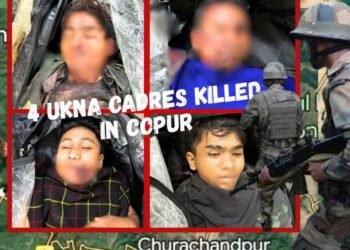Shamsud-Din Jabbar, a Texas native and former U.S. Army soldier, carried out a deadly attack on New Year’s revelers in New Orleans’ French Quarter. Hours before the assault, he declared allegiance to the Islamic State in social media videos. The FBI has recovered IS propaganda from the scene and continues to investigate any potential ties to the terror organization.
BY PC Bureau
The U.S. Federal Bureau of Investigation (FBI) announced Thursday that Shamsud-Din Jabbar, a U.S. Army veteran, acted alone when he drove a pickup truck into a crowd of New Year’s revelers in New Orleans’ French Quarter, killing 15 people. The Texas resident had pledged allegiance to the Islamic State (IS) and posted five videos on Facebook hours before the attack, declaring his affiliation with the terror group.
<blockquote class=”twitter-tweet”><p lang=”en” dir=”ltr”>FBI literally photographed the ISIS flag from the truck of the New Orleans terrorist, and still tried to tell us this wasn’t a terrorist attack… <a href=”https://t.co/BCiZcvXntc”>pic.twitter.com/BCiZcvXntc</a></p>— Kevin Dalton (@TheKevinDalton) <a href=”https://twitter.com/TheKevinDalton/status/1874573386170745128?ref_src=twsrc%5Etfw”>January 1, 2025</a></blockquote> <script async src=”https://platform.twitter.com/widgets.js” charset=”utf-8″></script>
Details of the Incident and Investigation
Authorities revealed that Jabbar planted two homemade bombs, one of which detonated near the scene. A black banner associated with IS was recovered from the vehicle. The FBI confirmed that Jabbar’s actions were inspired by IS, but investigators are probing whether he had any direct support from the group or its affiliates.
President Joe Biden addressed the attack, stating, “The FBI informed me that just hours before the incident, Jabbar posted videos on social media indicating he was inspired by IS.”
Background on IS and Its Global Reach
Though its self-proclaimed caliphate in Syria and Iraq was dismantled by a U.S.-led coalition over five years ago, IS continues to inspire attacks worldwide. The group, also known as ISIS or the Islamic State in Iraq and Syria, emerged as a breakaway faction of al-Qaida and gained notoriety under its former leader Abu Bakr al-Baghdadi.
<blockquote class=”twitter-tweet”><p lang=”en” dir=”ltr”>NEW: Video shows Tesla Cybertruck explosion at the Trump Hotel in Las Vegas. No word yet on the cause <a href=”https://t.co/tR9UabrsH4″>pic.twitter.com/tR9UabrsH4</a></p>— BNO News (@BNONews) <a href=”https://twitter.com/BNONews/status/1874542092770549884?ref_src=twsrc%5Etfw”>January 1, 2025</a></blockquote> <script async src=”https://platform.twitter.com/widgets.js” charset=”utf-8″></script>
At its peak in 2014, IS controlled vast swathes of territory in Iraq and Syria, committing atrocities against religious minorities and dissenting Sunni Muslims. While its ability to coordinate large-scale attacks in the West has diminished, the group has maintained its ideology, drawing individuals like Jabbar to carry out acts of violence against civilians.
Historical Context and Recent Developments
The attack in New Orleans recalls past IS-inspired events, such as the 2015 Paris attacks that claimed 130 lives. While IS no longer governs significant territory, it remains a potent symbol for extremists worldwide, exploiting social media and propaganda to recruit and incite violence.
The investigation into Jabbar’s attack continues, focusing on the extent of his ties to IS and the motives behind his heinous act.













